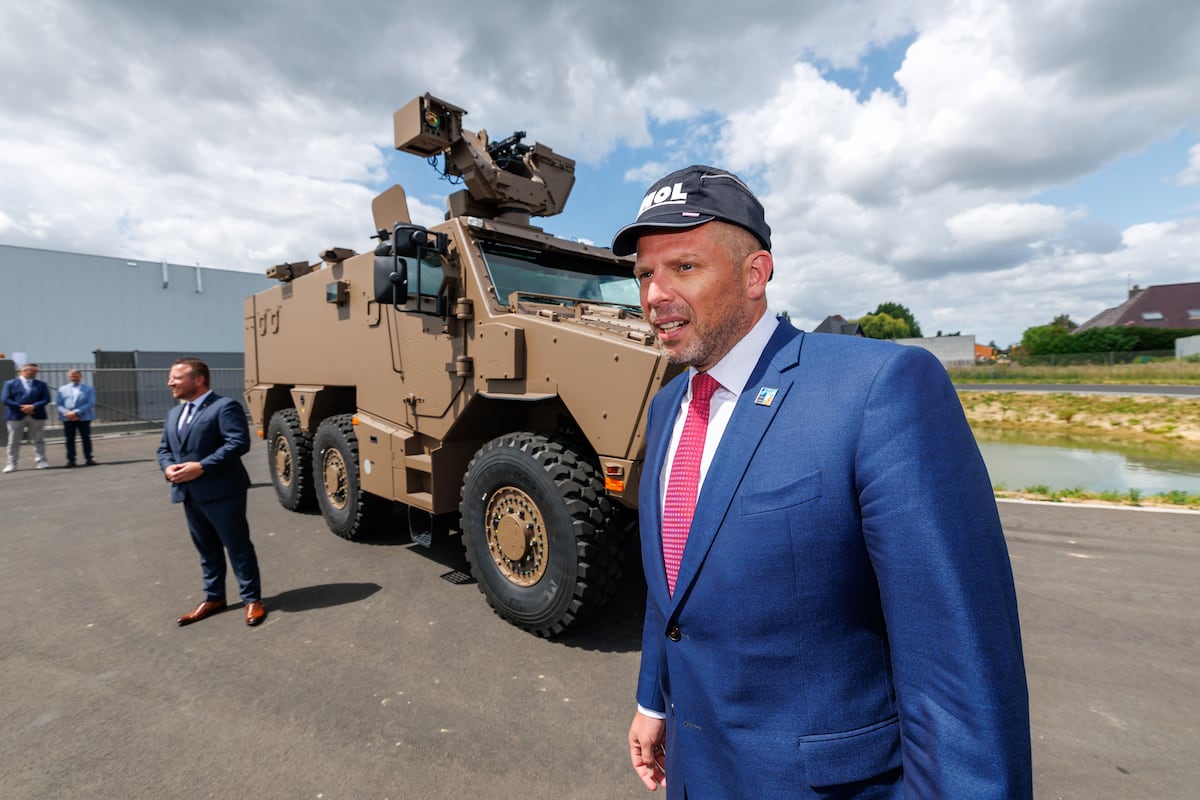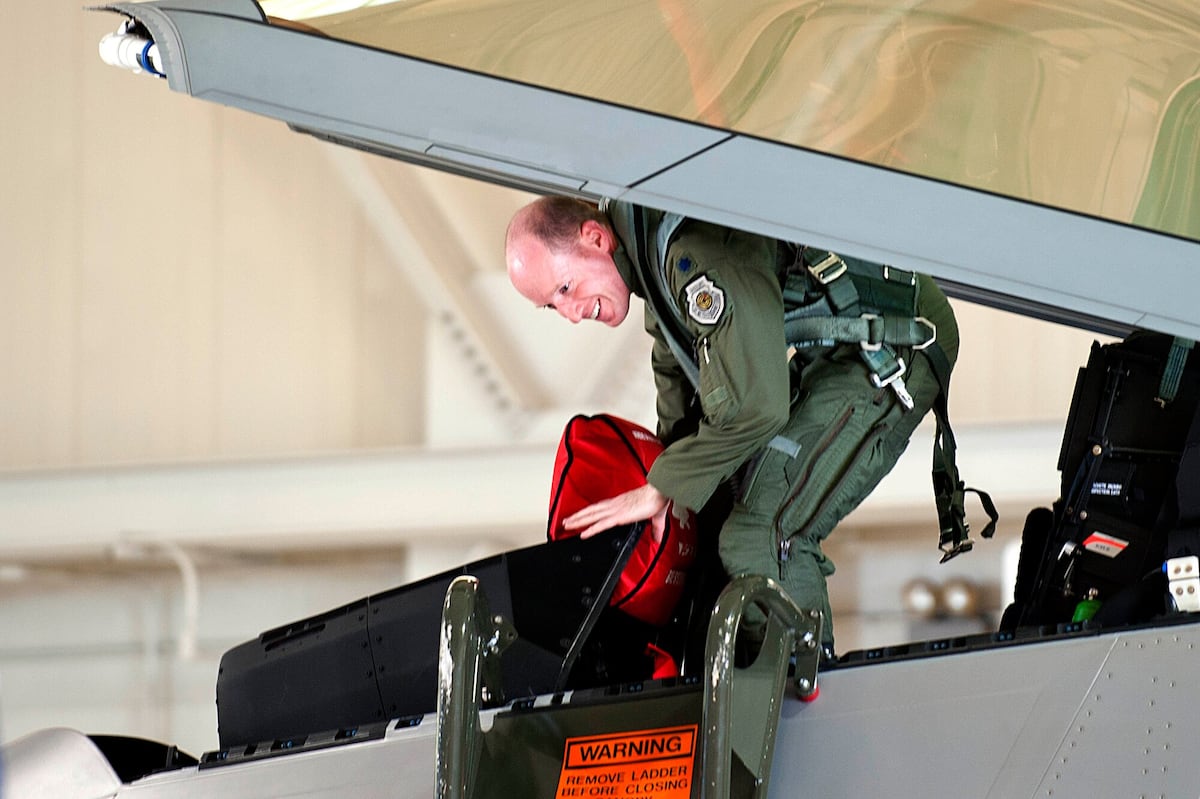PARIS — Belgium will buy more F-35s, a third frigate and spend billions of euros on air defense as part of an updated strategic plan approved by the government on Friday, with the country seeking to fix capability gaps after decades of being one of NATO’s lowest spenders on defense.
Belgium’s military requires a “thorough transformation” to create a force fit to deter and for high-intensity warfare rather than expeditionary missions, Defence Minister Theo Francken wrote in a foreword to the 100-plus-page Strategic Vision 2025 report. In addition to more hardware, the plan calls for raising the number of military personnel by around a third by 2034.
“A country like Belgium can only remain free and sovereign by aligning itself with loyal and powerful partners,” Francken said. “And we can only count on their loyalty if we are prepared to show solidarity in their defense.”
The new Belgian government earlier this year agreed to lift defense spending to 2% of GDP, for a budget of €12.8 billion (US$14.9 billion) in 2025, breaking with decades lingering at the bottom of NATO’s defense-spending tables. The country allocated an estimated 1.29% of GDP to defense in 2024, with only Spain doing worse.
As part of the strategic plan published on Friday, Belgium is budgeting €34.8 billion in capacity commitments for 2026-2034, with €24.7 billion of the funds to be spent over the period.
“Through concrete commitments, the government aims to restore the country’s diplomatic credibility,” Francken said. “It’s against this backdrop that this new strategic vision has been approved by the government.”
The current defense budget can’t patch all the gaps left by years of under-investment, and Belgium will focus on priority areas, according to the report. Those include making its medium motorized brigade fully operational, creating layered air defenses, building up ammo supplies to ensure readiness, adding air-combat capability and expanding maritime surface-combat capacity.
Planned purchases include an additional 11 F-35 fighters for a budget of €1.67 billion, with orders planned next year. Belgium has already ordered 34 of the jets, with eight delivered so far and the entire fleet expected to be operational early 2031.
High-intensity operations and new threats such as drones and hypersonic missiles make strengthening the air force component “absolutely necessary,” while the war in Ukraine has demonstrated the need for air power to avoid a stalemate, according to the report.
Belgium currently lacks any ground-based missile defense, and will buy 10 NASAMS systems from Kongsberg for €2 billion, with orders in 2026, as a first step to gradually building up an anti-air capability. The aim will be to defend the entire territory, with a focus on sensitive infrastructure, according to the plan – Belgium is home to Europe’s second-busiest port in Antwerp as well as NATO headquarters in Brussels.
The government also intends to buy three long-range air-defense systems, with a budget of €2 billion and a first commitment planned in 2029. For the long-range systems, full interoperability with the air-defense capacities of the Netherlands “must absolutely be guaranteed.” While the report didn’t go into details, Belgium’s northern neighbor operates the U.S. Patriot system.
The budget plans over the period also include €13.9 billion for the country’s land motorized capability, of which €6 billion are for combat maneuver. Belgium says it’s committed to providing NATO with a motorized medium brigade, a motorized light brigade and a joint motorized medium-combat reconnaissance battalion together with Luxembourg.
The medium brigade will have around 7,800 troops and 2,700 vehicles of various types, with the goal of being able to field the completed brigade in 2030, particularly in a NATO context.
To bolster the naval component of the armed forces, Belgium plans to buy a third anti-submarine warfare frigate, for a budget of €1.3 billion. Belgium and the Netherlands each ordered two ASW frigates from Damen in 2023, with the Netherlands saying last year it would double its order as part of increased defense spending.
The country also plans to order a third MQ-9B SkyGuardian drone in 2027 for a budget of €254 million.
The Belgian government in April agreed to increase defense spending to 2% of GDP in 2025 and maintain that level through to 2033, before an increase to 2.5%. After the NATO meeting in June, where allies agreed on core defense spending of 3.5%, the government will “study the modalities” of a potential increase, Francken said.
Based on the current plans and economic outlook, Belgian defense spending would rise gradually to €16.5 billion in 2033 before a jump to €21.3 billion in 2034, according to the strategy report.
Belgium’s strategic goals for 2035 are to prepare for a high-intensity military conflict in a context of collective defense, protect its territory and to anticipate future warfare, according to the report.
The government goal is to increase military personnel to 29,000 by the end of 2029 and rising to 34,500 personnel by the end of 2034, from 26,200 troops at the start of this year, while also more than tripling the number of civilian defense staff.
Belgium additionally plans to expand its reserve force five-fold to 12,800 by the end of the planning period, as well as introduce a voluntary military service year for young adults in 2026, following the example of the Dutch service-year program started in 2023.
Francken said the threat of war is now greater than at any time during the Cold War, and Belgium lacks readiness in all areas, including a population that is insufficiently informed and aware of the reality of military threats.
The U.S. pivot to Asia means Europe is forced to assume a certain level of strategic autonomy, and Belgium argues for developing a European defense pillar within NATO, according to Francken.
An end to the war in Ukraine could prompt Russia to test the solidarity of NATO, for example by invading a Baltic country or through a targeted missile attack on an alliance member, the latter of which could include Belgium, the strategy report said.
Rudy Ruitenberg is a Europe correspondent for Defense News. He started his career at Bloomberg News and has experience reporting on technology, commodity markets and politics.
Read the full article here








Leave a Reply